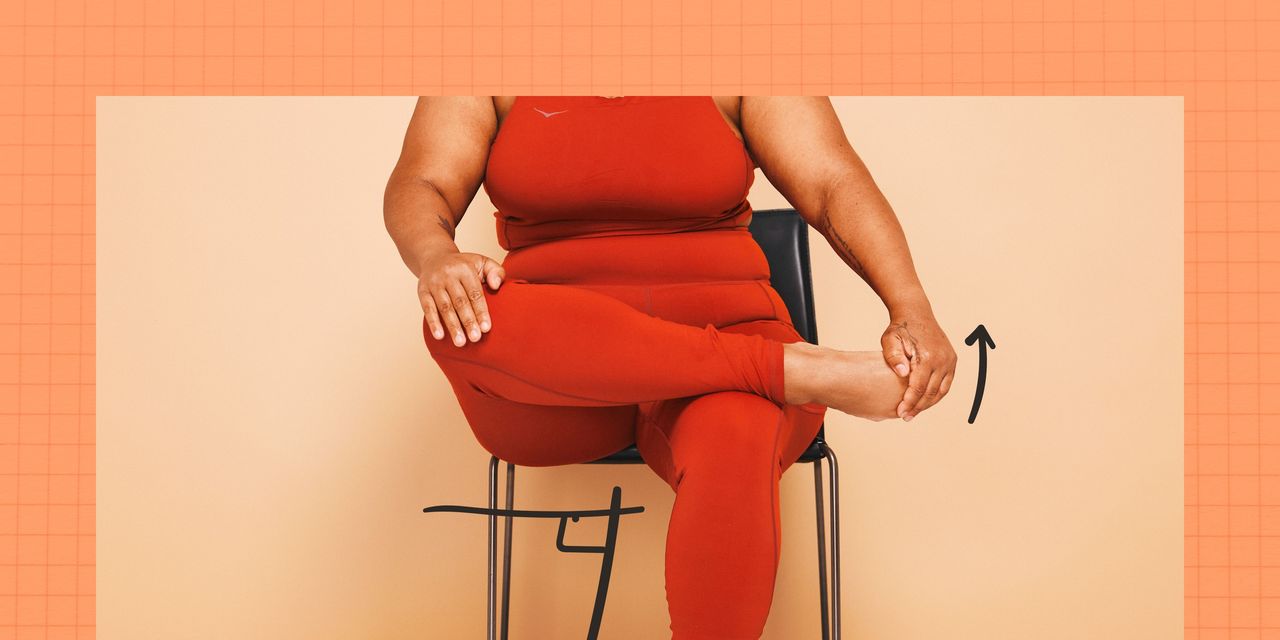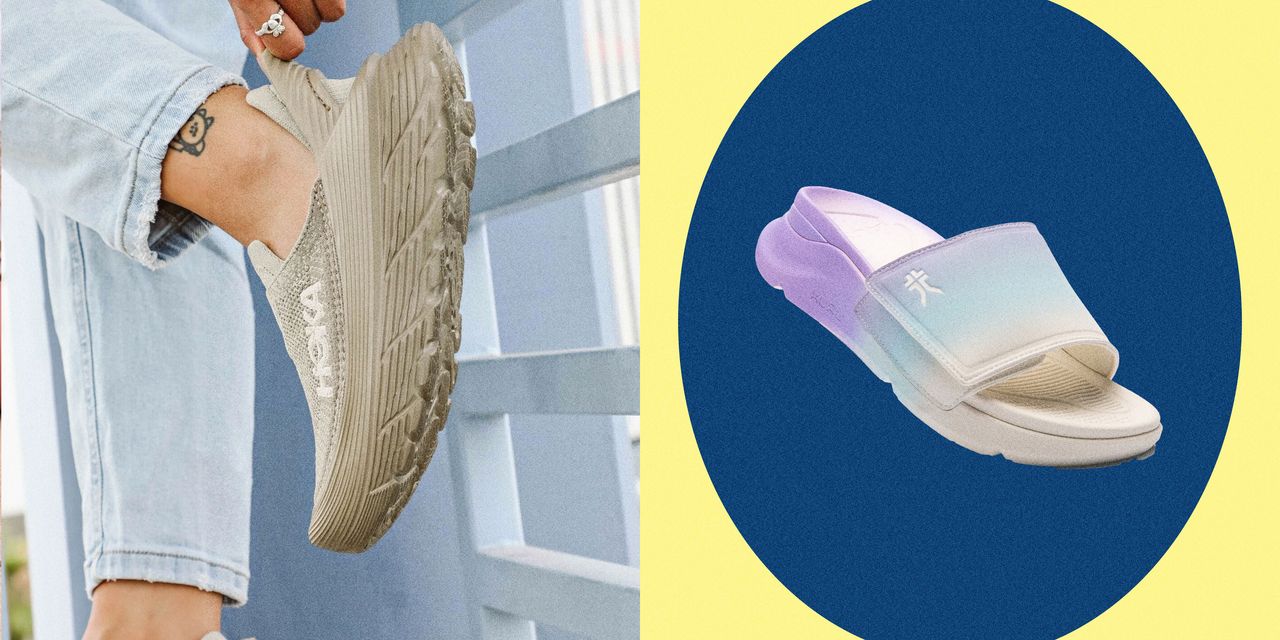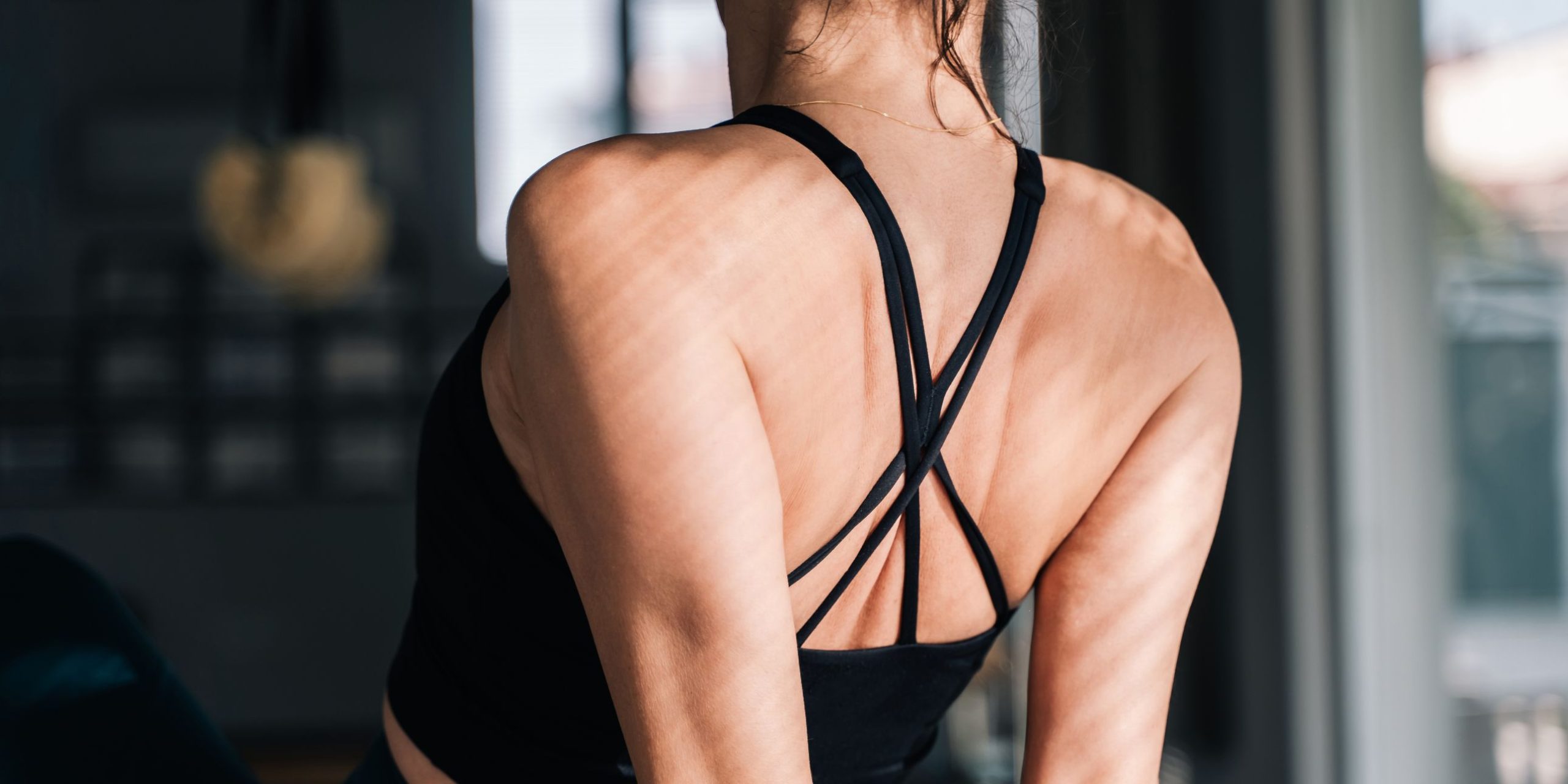This Seated Leg Stretch Makes Tight, Achy Shins Feel So, So Good

Tight, achy shins can mess with your exercise routine…and whatever else is on your agenda, like strolling with your pup or climbing stairs. But with a seated shin stretch, you can deliver sweet relief to your barking legs—and all you need is a chair to get it done.
We tapped Femi Betiku, PT, DPT, CSCS, a physical therapist and Pilates instructor in Westchester, New York, to understand what causes shin tightness in the first place, the ideal way to stretch this area, and the perks of doing so. We also got his input on a simple-yet-seriously effective seated shin stretch you can try today. Ready for quick relief? Here’s the at-home solution your achy legs have been begging for.
Why do shins get tight?
First, let’s get clear on what your shins are. Technically, the shin is a bone called the tibia, which extends from below your knee to the ankle. A muscle, known as the tibialis anterior, runs right along the tibia, at the front part of your lower leg.
When you feel tightness in this area, it’s usually the result of the tibialis anterior getting overworked, which causes tiny fibers of that muscle to start pulling on the bone, Dr. Betiku explains. This, in turn, leads to inflammation in the area. Now, the inflammation itself isn’t a problem. “It’s okay if it’s inflamed,” Dr. Betiku says—as long as it’s a temporary thing and the muscle fibers go on to heal. But when that doesn’t happen, and the inflammation just sticks around, then that’s what can bring on the sensation of lingering tightness and/or pain, he explains. In fact, there’s a name for this: shin splints, or medial tibial stress syndrome in medical-speak.
Shin splints are common among runners, especially those who just ramped up their training, since that can force the tibialis anterior into overdrive. “Also it can happen with people who just started a new walking program,” Dr. Betiku adds. Walking or running uphill, or on uneven or hard surfaces, can also overwork the tibialis anterior, triggering shin tightness and pain.
People with flat feet and those with hip tightness can be more prone to shin splints, as can those with tightness or weakness in the calves or tibialis posterior (the muscle on the backside of the shin bone), Dr. Betiku adds. That’s because strength or mobility issues with the opposing muscle groups can cause the tibialis anterior to once again take on too much stress.
What are the benefits of stretching tight shins?
Tight shins can be a serious drag on your workout routine and daily functioning. Fortunately, stretching can “go a very, very long way” in mitigating some of that discomfort, Dr. Betiku says.
How’s that? Well, when you overuse the tibialis anterior, the muscle becomes chronically shortened, Dr. Betiku explains. This contributes to feelings of stiffness and pain. Good news is, you can reverse this shortening with stretching, which lengthens the muscle and gives it “the relief it needs,” Dr. Betiku says. “You’re passively helping [the muscle] to just loosen up a little bit.”
Because tight calves can also contribute to shin tightness and pain, incorporating calf stretches can be a helpful balm as well, Dr. Betiki adds. “Creating that muscular balance through stretching could be really, really ideal,” he says. (Here are 11 calf stretch options that get the job done).
Quick caveat: We’re only talking about shin tightness here; if you have severe pain concentrated to one small spot on your shin, especially if that pain gets worse with movement, you may be dealing with something more serious, like a stress fracture. In that case, stretching isn’t going to be your solution. Instead, you should pause your movement routine and get checked out by a medical pro.
What’s the best way to stretch your shins?
The shin may seem like a tricky area to stretch, but it’s actually relatively simple: By doing plantar flexion—where you point your toes downward—you automatically lengthen the tibialis anterior. There are a bunch of different stretches that incorporate plantar flexion (scope some examples here). The best options for you will be the ones that give you a good stretch sensation without feeling painful.
If you’re plagued by tight or painful shins, Dr. Betiku suggests incorporating shin stretches every day. Then, once your discomfort eases up, shift to just doing them right after you run (or walk, if that’s the activity that triggered the pain), he says.
Why did we choose the one below? It’s appropriate for pretty much everyone (unlike other shin stretches, which may be too intense depending on how tight your tibialis anterior is). Plus, “it’s really hard to screw this up,” Dr. Betiku says. All you do is sit in a chair and pull your toes toward your body—no complex positioning involved.
How to do the seated shin stretch:
Here’s a beginner-friendly shin stretch that can help loosen up tightness in the area, so you can get back to moving more comfortably.
Katie Thompson
- Sit in a chair with knees bent, feet flat on the floor.
- Place your right ankle on top of your left thigh, just above the knee. Place your right hand on your left knee.
- Using your left hand, grab the toes on your right foot and gently pull them toward your body.
- Stop when you feel a stretch along your right shin bone. Hold for 30 seconds.
- Repeat on the other side. Complete 2 to 3 rounds total.
Demoing the move above is Paris Alexandra, founder of the Brooklyn Wellness Club, writer, and yoga and mindfulness facilitator.
Related:
- 9 Exercises for Knee Pain to Help You Move (and Feel!) Better
- 10 Hamstring Stretches Your Tight, Achy Legs Will Love
- 14 Mobility Exercises Anyone Over 35 Should Add to Their Day
Get more of SELF’s great fitness content delivered right to your inbox—for free.



